The farm is owned and run by Michael and his wife Lee and their two children, Alice and Michael.
In an effort to improve and develop the flock, he introduced Lanark sheep in the mid-1990s.
The family now runs about 900 Lanark ewes producing pure Lanarks, with some ewes crossed with Blue Leicester rams to create mule breeding stock.
They predominantly graze heather on the hill section of the farm, Trenearla, which rises to 1,900ft and forms part of the Comeragh mountains. About 70% of the land is high mountain grazing.
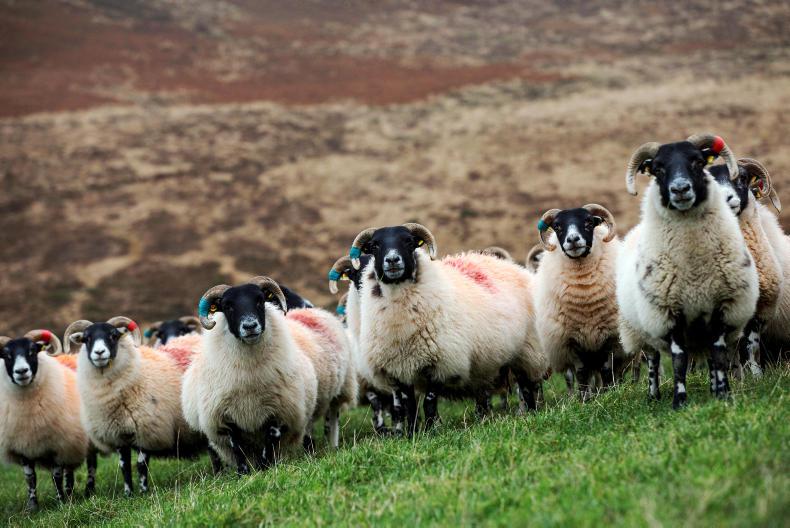
Some of Micheal Ketch's Lanark type Scotch Blackface hoggets down from the hill for tupping.
Michael's interest in Lanark sheep was sparked by a desire to develop sheep suited to his farm.
“I suspected this breed had the characteristics required and was proven right in that regard. They’re always in good body condition and can battle all the elements the weather throws at them," he said.
"The ewes are easy to maintain, are superb mothers and scan over 1.5 lambs per ewe each year. Male lambs are sold from September to Christmas at 45kg-plus.”
Attention to detail
Michael's attention to detail when it comes to breeding is a stand-out feature and something that is seen as rare in hill sheep breeding.
He has been performance-recording his sheep for 20 years. This has led to the development of some strong bloodlines, such as his Southern Storm line. He keeps the recording straightforward.
“I started in 2001. My system is basic. Ewe ear tag numbers are recorded in a book along with the ear tag number of each ram used and the name of the ram.
"Six years ago, I purchased a sheep recording program and started keeping computerised records. I still keep my written records, as glitches in recording at lambing time are frustrating and slow down the job.
"A number of new bloodlines are introduced every year and this, coupled with our recording, guarantees our repeat customers have the option of new bloodlines every year.”
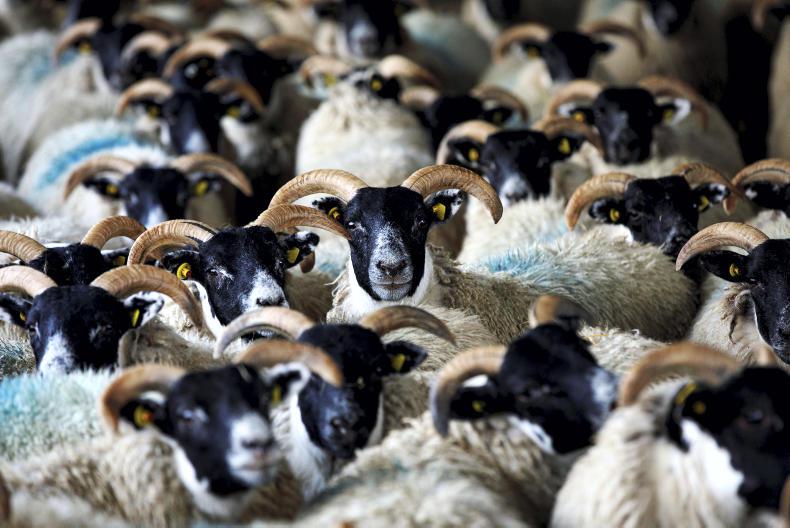
Some of Micheal Ketch's Lanark type Scotch Blackface ewe lambs wintered indoors.
Ahead of mating, he picks ewes for each ram used and they are kept with that ram for 17 days. After this, rams are switched around and get a different-coloured raddle. The records allow Michael to be selective with his breeding.
“Before mating each year, our hogget ewes are picked into lots of between 30 and 60 ewes, from the best down to some which go to the Blue Leicester for the mule ewe lamb job.
"These same groups are marked and separated every year thereafter for mating. Some of the new rams are tried out every year on these hogget ewes.
It takes a lifetime to breed and develop a consistently good flock
"The best, or what I think to be the best, ram goes to my best hoggets. These hoggets indicate which rams are breeding the best offspring.
"If I am happy with the quality of the progeny from these rams, they may be used on the same ewes in subsequent years."
Similarly, when it comes to selecting the better ram lambs at the back end of the year, he can see which rams are breeding the best males.
“It takes a lifetime to breed and develop a consistently good flock of these Blackface ewes with the characteristics required and all the time you have to have the mental picture of your perfect sheep.”
Perception
This perception, along with the knowledge Michael has of which ewes and rams are performing best, will determine which ewe lambs he retains for breeding and which ram lambs are used.
He adds: “A good ram with all the desired traits may sometimes disappoint and not produce what you hoped for. But when you know the ones breeding well, this is a great advantage and makes all the recording worthwhile.
"A mediocre ram, even of sufficient size, which lacks the desired characteristics and breeding will always disappoint by the quality of his offspring.
"A lot of work , expertise and investment has gone into improving the Trenearla flock of Lanark Blackface Ewes and who knows, if I’m spared and in good health for another 10 or 15 years we might move closer to the holy grail, perfection.”
So what does Michael think makes a good hill sheep.
“The principal features we look for in our sheep are character, size, conformation, vigour, coat and muscle. Vigour is crucial in hill sheep.
"Therefore our selection of sires has to reflect this. The tup has to look alive, be bright and alert and stand well on his legs. He has to have a good muzzle.
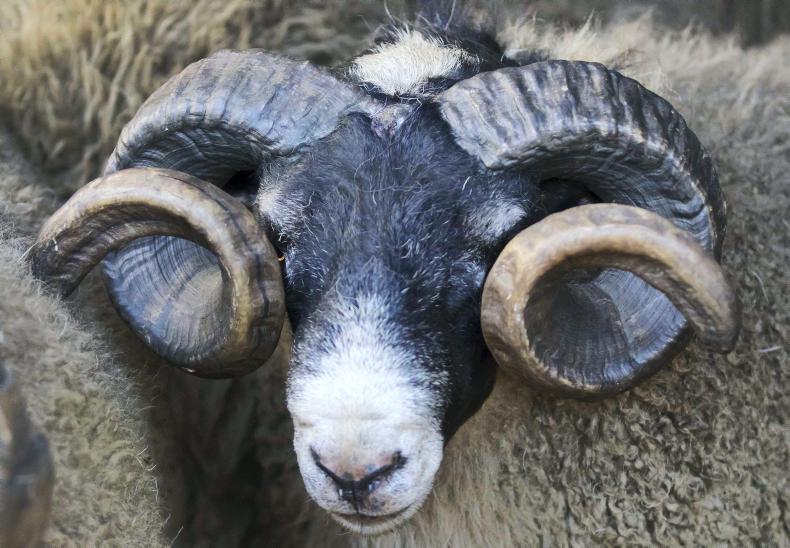
Michael has been performance recording sheep for over 20 years. This has allowed him to track bloodlines and select the top performing animals. Patrick Browne
"Big and physically correct too, but they must also have that spark, or fire. You can see it in the eye of a animal and in the way they carry themselves.
"Also a tight kind of coat, which is best for crossing and also more suitable on the hills where a lot more rain falls, as they carry less water.
"This enables them to conserve energy, as this type of coat is better for insulation and carries less snow. These are things not taken into account by Sheep Ireland.”
Having been part of the Sheep Ireland Ram Plus program, Michael withdrew from it, as he found buyers had no interest in it.
“No matter how good the ram's index was, buyers seemed to prefer the more physically correct bigger ram. Some of the better-rated rams may not always be the more desirable or correct ones.
"If my sheep go to a farm that doesn’t record anything, then it’s of little value. I’m better off writing the records in a copy book. ”
Breeding records
Having years of breeding records himself, he thinks it would be beneficial if the genetic data made up for part of the index, with a visual criteria rating making up 40% to 50% for hill breeds. It could also lead to more buy-in to Sheep Ireland from hill farmers.
“This should be carried out by someone with a working knowledge of the breed. It could even be the farmers themselves.”
"I have strived to breed the best sheep possible with expertise and the quality of sire available or affordable to me. With this breed of sheep you will never achieve perfection.
"They are very inconsistent and when you are aiming to have the most uniform female sheep, not many rams would produce this.

Some of Micheal Ketch's Lanark type Scotch Blackface ram lambs.
"Having said that, it is easier to produce good females than males. You have to work hard to produce 30 or 40 shearlings to sell each year.”
"I have been committed to the introduction and improvement of Lanark sheep for the bones of 30 years and during this time, the demand for our sheep has been steadily growing.”
Sale
It reached the point where Michael began holding a sale on the farm. Taking place on the third Saturday in September each year, the on-farm auction has now become a fixture in hill sheep breeding sales.
Michael said: “It’s a big commitment involving almost three weeks' work, getting the stock sorted and ready for sale. Then there's advertising, setting up of penning, dealing with the enquiries, organising help. By sales day, I’m ready to disappear. I’d rather be in a cave up the mountain.”
The sale is a testament to Michael's focus on breeding that has been rewarded with Trenearla sheep finding their way to most counties in Ireland. Michael believes this is because of his efforts to breed the best sheep for hill conditions.
“We’re breeding big correct sheep. First and foremost they have to be correct. You have to know the flocks you're buying from more than the sheep.
It’s the breeders and those who seek to improve the commercial stock that buy the best possible breeding sheep
"All rams are untouched. By that, I mean nothing is trimmed or clipped. They’re sold as they are. The customer can see what they're buying.”
Lanark stock for sale each year include shearling rams, ram lambs, stock rams, five-year-old ewes, younger ewes, hogget ewes, ewe lambs and mule ewe lambs.
"It’s the breeders and those who seek to improve the commercial stock that buy the best possible breeding sheep, to improve the quality of any breed.”
However he feels efforts are often treated with disregard by processors and wholesalers.
“You can set your clock every year to the drop in lamb prices by the middle of August to mid-October when the hill and mid-season lambs come to the market. There should be a minimum price set which finished lambs should not fall below.
"Hill lamb is one of the healthiest, natural foods available. As a natural product, there is a potential future for hill sheep. But is it too late to save the sector?
"It would be an absolute shame if the hill sheep farms in this country were to be lost forever through shortsightedness and self-interests.
"Little has changed in the past 12 years and for indeed twice that length. Our hill sheep farms are perilously close to being lost forever as young people will not continue to commit to the work involved without sufficient reward.”
Direct to the consumer
Twelve years ago, a suggestion Michael made prompted a number of groups to sell their lambs directly to the consumer.
He feels this means of selling is more suited to a larger group of like-minded producers who would be in a position to supply a growing demand and he sees another potential solution.
“If current price fluctuations are to continue, it’s something to consider on a larger scale. While the market in this country may be insufficient, overseas market should be identified for quality uniform hill lamb produced to a top standard. After all, most of the quality hill lamb is lost in the commodity market and sold at a discounted price.
"The story of the producer behind the lamb should be marketed to ensure premium price for the right type of lamb produced from our hill flocks.
"Dare I suggest setting up a forum whereby hill lamb producers and customers could come together in each other's interests.
"Farmers need to take back control of their business. They have for too long been dictated to.”
Climate change
The market place isn’t the only area where farmers have challenges. The present situation regarding climate change is inadvertently affecting confidence in all sectors of farming at the minute and Michael feels opinions are too polarised, but he feels they need to find the middle ground.
“On one side, you have climate change activists, vegans and vested commercial interests, while all the time sensationalism in the media serves to divide opinion. On the other hand, the farming sector is trying to protect its interests and livelihood.
"A platform is needed in which the clear facts can be established. Why can’t the two sides get together. Is that not a logical suggestion?
"I suppose my feeling on all this stuff is it’s too late for the hill sheep sector as a whole. That might be viewed as negative thinking, but it is realistic.”
The 18th annual Trenearla Blackface production sale takes place on farm at Millerstown, Stradbally, Co Waterford (X42WF70), on Saturday 19 September starting at 2pm.

The annual Lanark sheep sale at Millerstown, Stradbally, Co Waterford. Pictured are Lanark ewe lambs . Picture: Patrick Browne
The sale of 600 purebred Lanark and Mule breeding sheep includes 100 Lanark ewes, 180 Lanark ewe lambs, 120 five-year-old Lanark ewes drafted from the hill, 70 two-, three- and four-year-old ewes, 75 Mule ewe lambs, 35 Lanark shearling rams, five aged Lanark stock rams and 10 Lanark ram lambs.
For further information, visit www.trenearlablackface.com or call 087-252 9701.
The farm is owned and run by Michael and his wife Lee and their two children, Alice and Michael.
In an effort to improve and develop the flock, he introduced Lanark sheep in the mid-1990s.
The family now runs about 900 Lanark ewes producing pure Lanarks, with some ewes crossed with Blue Leicester rams to create mule breeding stock.
They predominantly graze heather on the hill section of the farm, Trenearla, which rises to 1,900ft and forms part of the Comeragh mountains. About 70% of the land is high mountain grazing.

Some of Micheal Ketch's Lanark type Scotch Blackface hoggets down from the hill for tupping.
Michael's interest in Lanark sheep was sparked by a desire to develop sheep suited to his farm.
“I suspected this breed had the characteristics required and was proven right in that regard. They’re always in good body condition and can battle all the elements the weather throws at them," he said.
"The ewes are easy to maintain, are superb mothers and scan over 1.5 lambs per ewe each year. Male lambs are sold from September to Christmas at 45kg-plus.”
Attention to detail
Michael's attention to detail when it comes to breeding is a stand-out feature and something that is seen as rare in hill sheep breeding.
He has been performance-recording his sheep for 20 years. This has led to the development of some strong bloodlines, such as his Southern Storm line. He keeps the recording straightforward.
“I started in 2001. My system is basic. Ewe ear tag numbers are recorded in a book along with the ear tag number of each ram used and the name of the ram.
"Six years ago, I purchased a sheep recording program and started keeping computerised records. I still keep my written records, as glitches in recording at lambing time are frustrating and slow down the job.
"A number of new bloodlines are introduced every year and this, coupled with our recording, guarantees our repeat customers have the option of new bloodlines every year.”

Some of Micheal Ketch's Lanark type Scotch Blackface ewe lambs wintered indoors.
Ahead of mating, he picks ewes for each ram used and they are kept with that ram for 17 days. After this, rams are switched around and get a different-coloured raddle. The records allow Michael to be selective with his breeding.
“Before mating each year, our hogget ewes are picked into lots of between 30 and 60 ewes, from the best down to some which go to the Blue Leicester for the mule ewe lamb job.
"These same groups are marked and separated every year thereafter for mating. Some of the new rams are tried out every year on these hogget ewes.
It takes a lifetime to breed and develop a consistently good flock
"The best, or what I think to be the best, ram goes to my best hoggets. These hoggets indicate which rams are breeding the best offspring.
"If I am happy with the quality of the progeny from these rams, they may be used on the same ewes in subsequent years."
Similarly, when it comes to selecting the better ram lambs at the back end of the year, he can see which rams are breeding the best males.
“It takes a lifetime to breed and develop a consistently good flock of these Blackface ewes with the characteristics required and all the time you have to have the mental picture of your perfect sheep.”
Perception
This perception, along with the knowledge Michael has of which ewes and rams are performing best, will determine which ewe lambs he retains for breeding and which ram lambs are used.
He adds: “A good ram with all the desired traits may sometimes disappoint and not produce what you hoped for. But when you know the ones breeding well, this is a great advantage and makes all the recording worthwhile.
"A mediocre ram, even of sufficient size, which lacks the desired characteristics and breeding will always disappoint by the quality of his offspring.
"A lot of work , expertise and investment has gone into improving the Trenearla flock of Lanark Blackface Ewes and who knows, if I’m spared and in good health for another 10 or 15 years we might move closer to the holy grail, perfection.”
So what does Michael think makes a good hill sheep.
“The principal features we look for in our sheep are character, size, conformation, vigour, coat and muscle. Vigour is crucial in hill sheep.
"Therefore our selection of sires has to reflect this. The tup has to look alive, be bright and alert and stand well on his legs. He has to have a good muzzle.

Michael has been performance recording sheep for over 20 years. This has allowed him to track bloodlines and select the top performing animals. Patrick Browne
"Big and physically correct too, but they must also have that spark, or fire. You can see it in the eye of a animal and in the way they carry themselves.
"Also a tight kind of coat, which is best for crossing and also more suitable on the hills where a lot more rain falls, as they carry less water.
"This enables them to conserve energy, as this type of coat is better for insulation and carries less snow. These are things not taken into account by Sheep Ireland.”
Having been part of the Sheep Ireland Ram Plus program, Michael withdrew from it, as he found buyers had no interest in it.
“No matter how good the ram's index was, buyers seemed to prefer the more physically correct bigger ram. Some of the better-rated rams may not always be the more desirable or correct ones.
"If my sheep go to a farm that doesn’t record anything, then it’s of little value. I’m better off writing the records in a copy book. ”
Breeding records
Having years of breeding records himself, he thinks it would be beneficial if the genetic data made up for part of the index, with a visual criteria rating making up 40% to 50% for hill breeds. It could also lead to more buy-in to Sheep Ireland from hill farmers.
“This should be carried out by someone with a working knowledge of the breed. It could even be the farmers themselves.”
"I have strived to breed the best sheep possible with expertise and the quality of sire available or affordable to me. With this breed of sheep you will never achieve perfection.
"They are very inconsistent and when you are aiming to have the most uniform female sheep, not many rams would produce this.

Some of Micheal Ketch's Lanark type Scotch Blackface ram lambs.
"Having said that, it is easier to produce good females than males. You have to work hard to produce 30 or 40 shearlings to sell each year.”
"I have been committed to the introduction and improvement of Lanark sheep for the bones of 30 years and during this time, the demand for our sheep has been steadily growing.”
Sale
It reached the point where Michael began holding a sale on the farm. Taking place on the third Saturday in September each year, the on-farm auction has now become a fixture in hill sheep breeding sales.
Michael said: “It’s a big commitment involving almost three weeks' work, getting the stock sorted and ready for sale. Then there's advertising, setting up of penning, dealing with the enquiries, organising help. By sales day, I’m ready to disappear. I’d rather be in a cave up the mountain.”
The sale is a testament to Michael's focus on breeding that has been rewarded with Trenearla sheep finding their way to most counties in Ireland. Michael believes this is because of his efforts to breed the best sheep for hill conditions.
“We’re breeding big correct sheep. First and foremost they have to be correct. You have to know the flocks you're buying from more than the sheep.
It’s the breeders and those who seek to improve the commercial stock that buy the best possible breeding sheep
"All rams are untouched. By that, I mean nothing is trimmed or clipped. They’re sold as they are. The customer can see what they're buying.”
Lanark stock for sale each year include shearling rams, ram lambs, stock rams, five-year-old ewes, younger ewes, hogget ewes, ewe lambs and mule ewe lambs.
"It’s the breeders and those who seek to improve the commercial stock that buy the best possible breeding sheep, to improve the quality of any breed.”
However he feels efforts are often treated with disregard by processors and wholesalers.
“You can set your clock every year to the drop in lamb prices by the middle of August to mid-October when the hill and mid-season lambs come to the market. There should be a minimum price set which finished lambs should not fall below.
"Hill lamb is one of the healthiest, natural foods available. As a natural product, there is a potential future for hill sheep. But is it too late to save the sector?
"It would be an absolute shame if the hill sheep farms in this country were to be lost forever through shortsightedness and self-interests.
"Little has changed in the past 12 years and for indeed twice that length. Our hill sheep farms are perilously close to being lost forever as young people will not continue to commit to the work involved without sufficient reward.”
Direct to the consumer
Twelve years ago, a suggestion Michael made prompted a number of groups to sell their lambs directly to the consumer.
He feels this means of selling is more suited to a larger group of like-minded producers who would be in a position to supply a growing demand and he sees another potential solution.
“If current price fluctuations are to continue, it’s something to consider on a larger scale. While the market in this country may be insufficient, overseas market should be identified for quality uniform hill lamb produced to a top standard. After all, most of the quality hill lamb is lost in the commodity market and sold at a discounted price.
"The story of the producer behind the lamb should be marketed to ensure premium price for the right type of lamb produced from our hill flocks.
"Dare I suggest setting up a forum whereby hill lamb producers and customers could come together in each other's interests.
"Farmers need to take back control of their business. They have for too long been dictated to.”
Climate change
The market place isn’t the only area where farmers have challenges. The present situation regarding climate change is inadvertently affecting confidence in all sectors of farming at the minute and Michael feels opinions are too polarised, but he feels they need to find the middle ground.
“On one side, you have climate change activists, vegans and vested commercial interests, while all the time sensationalism in the media serves to divide opinion. On the other hand, the farming sector is trying to protect its interests and livelihood.
"A platform is needed in which the clear facts can be established. Why can’t the two sides get together. Is that not a logical suggestion?
"I suppose my feeling on all this stuff is it’s too late for the hill sheep sector as a whole. That might be viewed as negative thinking, but it is realistic.”
The 18th annual Trenearla Blackface production sale takes place on farm at Millerstown, Stradbally, Co Waterford (X42WF70), on Saturday 19 September starting at 2pm.

The annual Lanark sheep sale at Millerstown, Stradbally, Co Waterford. Pictured are Lanark ewe lambs . Picture: Patrick Browne
The sale of 600 purebred Lanark and Mule breeding sheep includes 100 Lanark ewes, 180 Lanark ewe lambs, 120 five-year-old Lanark ewes drafted from the hill, 70 two-, three- and four-year-old ewes, 75 Mule ewe lambs, 35 Lanark shearling rams, five aged Lanark stock rams and 10 Lanark ram lambs.
For further information, visit www.trenearlablackface.com or call 087-252 9701.










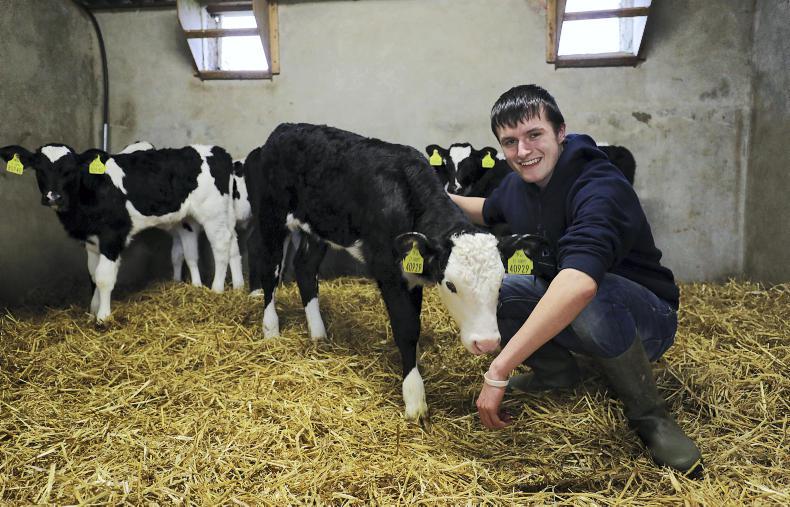
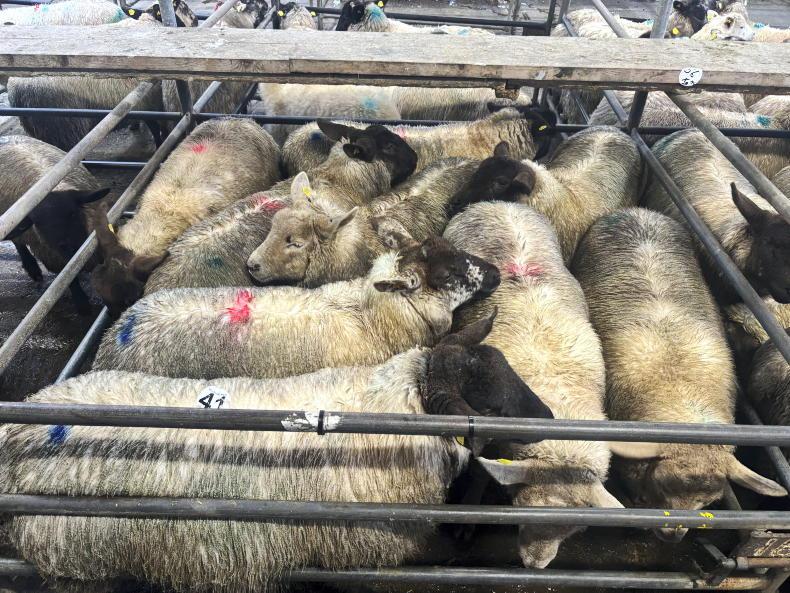
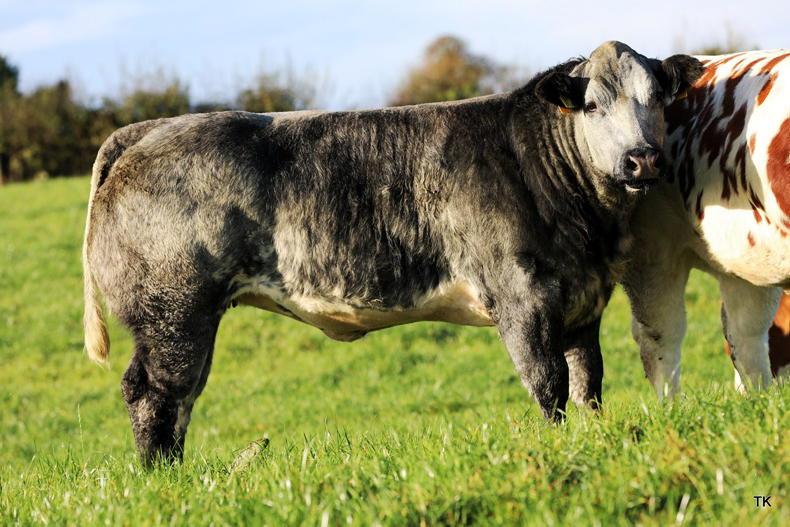
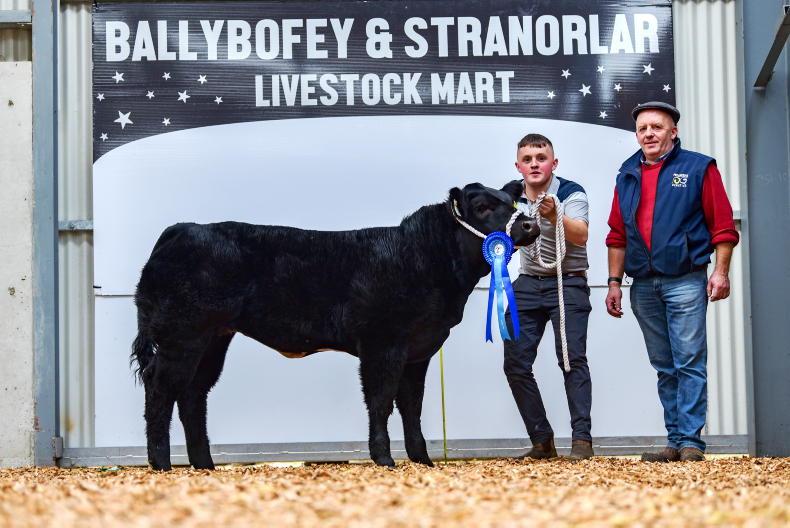
SHARING OPTIONS